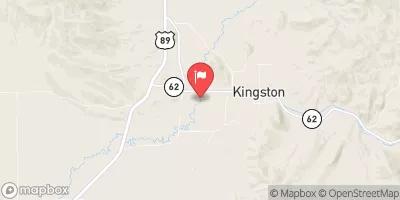Summary
The lake covers an area of about 15 acres and has a maximum depth of 25 feet. The area is popular among anglers due to its abundant fish species and breathtaking scenery.
Some of the prevalent fish species found in Flat Lake include rainbow trout, brook trout, cutthroat trout, and tiger trout. The fishing season runs from late May to early October, and the best fishing times are early in the morning or late in the evening. Fishing is typically done using flies, spinners, or bait.
Aside from fishing, visitors can enjoy a variety of other activities, such as hiking, camping, and picnicking. The lake is also near other popular attractions, such as the Mirror Lake Scenic Byway and the Provo River.
Fishing tips for Flat Lake include using small lures or flies that mimic local insects, fishing near drop-offs or underwater structures, and avoiding bright colors or loud noises that may spook the fish. It is also important to practice catch and release to preserve the lake's fish population.
The best time to visit Flat Lake is during the summer months from June to August, with average temperatures ranging from 76°F to 80°F. It is important to note that the weather in the area can be unpredictable and visitors should be prepared for sudden changes in temperature or weather conditions.
Weather Forecast
Nearby Streamflow Levels
Angling Safety Guidelines
Check local fishing rules, seasons, size limits, and license requirements to ensure legal and sustainable angling.
Handle Fish Responsibly
Use wet hands, minimize air exposure, and release fish gently to improve survival rates when practicing catch-and-release.
Choose the Right Gear
Match your rod, line, and tackle to the species and conditions to increase success and reduce unnecessary harm to fish.
Respect the Waterway
Avoid disturbing habitat, prevent bank erosion, and keep a safe distance from spawning areas to protect ecosystems.
Keep It Clean
Pack out all line, hooks, bait containers, and trash—discarded gear can injure wildlife and degrade waterways.
Related Links
Area Campgrounds
| Location | Reservations | Toilets |
|---|---|---|
 Barker Reservoir Area
Barker Reservoir Area
|
||
 Barker Recreation Area
Barker Recreation Area
|
||
 Posey Lake Campground
Posey Lake Campground
|
||
 Posy Lake
Posy Lake
|
||
 Blue Spruce Campground
Blue Spruce Campground
|
||
 Blue Spruce
Blue Spruce
|

 Yellow Lake
Yellow Lake
 Joe Lay Reservoir
Joe Lay Reservoir
 Lower Barker Reservoir
Lower Barker Reservoir
 Upper Barker Reservoir
Upper Barker Reservoir
 Dougherty Basin
Dougherty Basin






 Barker (Lower)
Barker (Lower)